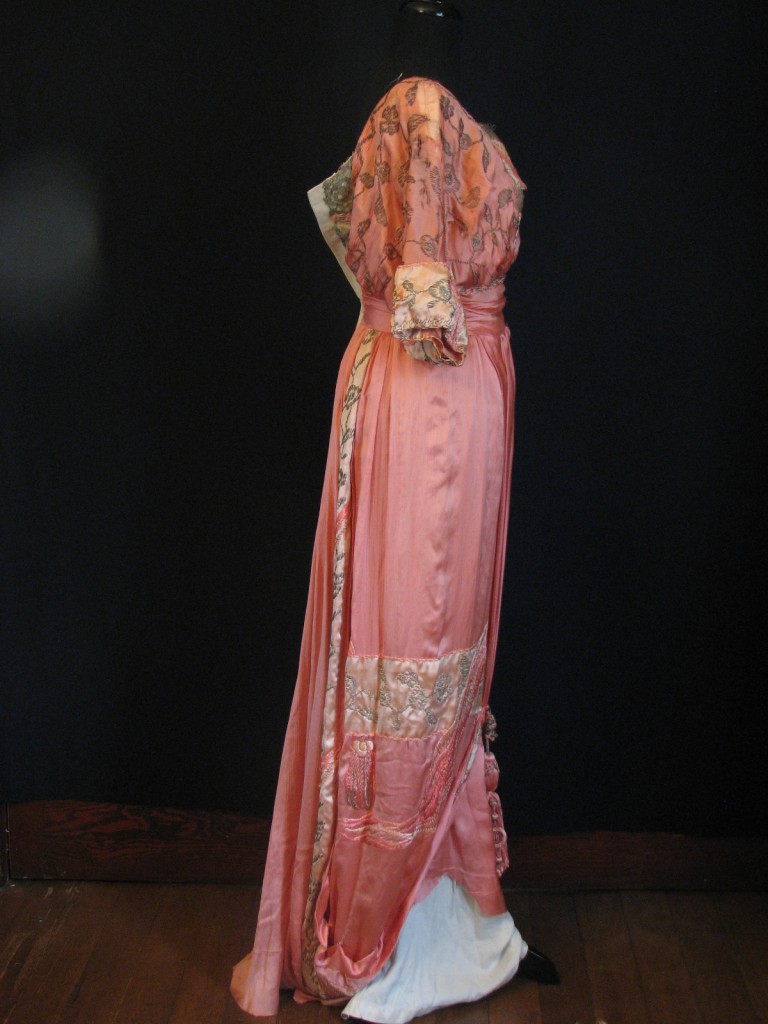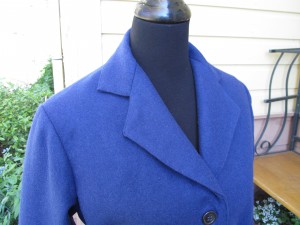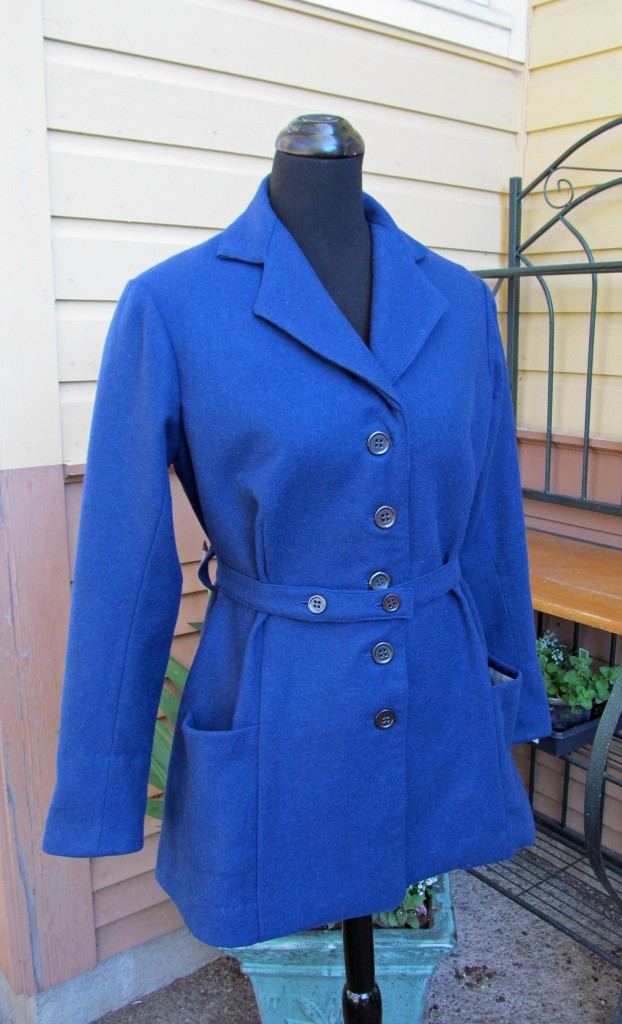
Vintage garments are our windows to the past. In them we can discover the techniques of early designers and dressmakers. Since I value each garment as an original source for research, I am reluctant to do anything to an original vintage garment that would destroy that information. However, some time ago I had a client approach me with an intriguing project: could I replicate a Paris original, circa 1912, salvaging the primary elements that made it a true work of art?
The dress was beautiful! The skirt had been draped cleverly in a novel style, and several sections of the gown were embroidered with metallic threads. There was a heavy, luxurious silk tassel at the front of the skirt. With all the draping and embellishment, it was clearly of the era. The shape of the skirt was slim, yet there was a graceful train. There was a high waist to the bodice, but a structured lining beneath it all. The most significant design detail was the square neckline in front, with a rich vestee of metallic lace, and a corresponding vee shaped section at the back closure. We have seen this line in Janet Arnold’s Patterns of Fashion, and of course, in the elegant dinner gowns in films like “Titanic” and shows like “Downtown Abbey.”
However, this particular garment was damaged beyond any change of wearing or even exhibiting it. The bodice had worn away on the shoulders. Sections of it were in shreds, probably due to the weight and roughness of the beautiful metallic embroideries. Sometime in the past, someone had cut away a section of the skirt, probably to use the rich embroideries as a home décor item. The skirt was ruined. And finally, the client wanted to wear it but couldn’t in its current condition. It was a size too small.
 The tops of the sleeves had worn away.
The tops of the sleeves had worn away.
I agreed to take on the challenge. Along the way I documented the original gown as well as I could so that I would have a record of the 1912 Paris couture techniques that were used in the original. Here is what I recorded.

The hand embroidered trim continued into the lower back sections. I thought of those early Parisiennes, spending their days under skylights in ateliers to create this gown.

The front of the gown, with its intricate draping and ornate tassel, was one of its most beautiful features.

The outside layers of the bodice were constructed over the boned foundation, giving the appearance of a soft kimono sleeve over the lace insert.
In my next post, I will share the step by step process of recreating the 1912 gown, using new materials where necessary and the original luxurious fabric where possible.





















